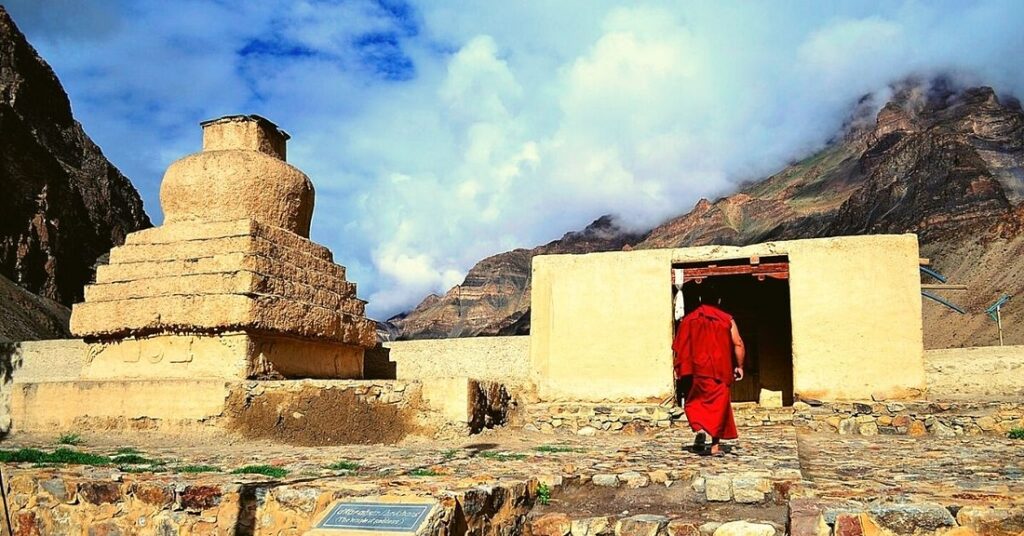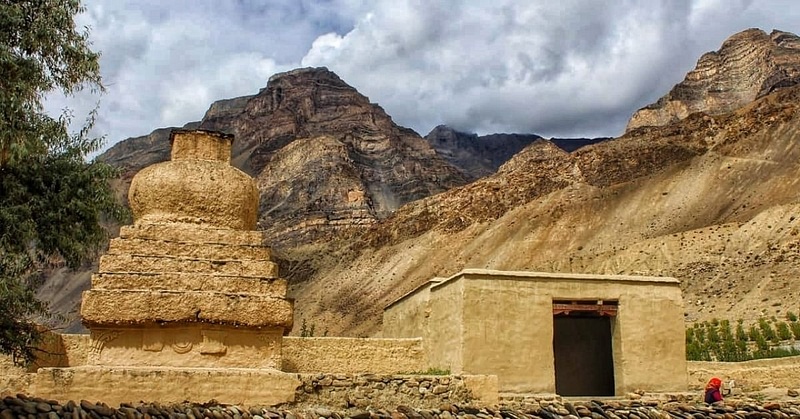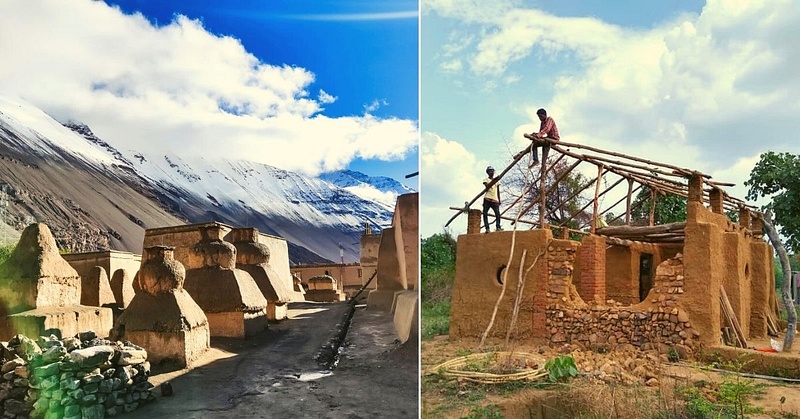From the extreme Himalayan weather, unpredictable climate changes to natural disasters like earthquakes, the Tabo Monastery has weathered several storms, teaching the world a valuable lesson on sustainability.
There are a number of ways one can adopt a sustainable lifestyle. From food, choice of products to the choice of house, the motivation to embrace out-of-the-box sustainable ideas and designs seems to be a newfound trend in the modern world.
However, this isn’t such a new development as we might credit it to be, especially in terms of sustainable architecture and design. This involves going back to the roots to learn and use ancient building techniques and materials married with innovative technologies.
One such example is the rekindled love for earthen buildings made out of a natural building material called cob. Cob is a careful blend of raw earth, water and fibrous materials like straw and has been enjoying global prominence for centuries. Be it the shores of the Nile river in Egypt, the Andes Mountains in Peru or the peak of Tibet, the use of raw earth to build public and private structures has been a practice for thousands of years. It continues to be so even in the modern world with over 1.7 billion people across the globe living in earthen homes. But its integration in urban infrastructure and planning is something we ought to explore in a large way.

The use of raw earth, one of the oldest and most popular construction materials, is also referenced by anthropologist Claude Lévi-Strauss in 1964, whereby he highlights the dual dependency of civilisations on raw or baked earth for development in any sector, from food, medicine to even architecture. In this regard, it is the use of a concoction of raw earth with other materials left to dry and harden under the sun, that has sustained the test of time.
This is because of many advantages of cob houses – one being that it is energy efficient. Walls built with cob are known to have good thermal mass and when that is combined with thatched straw roofs or terracotta tiles, it makes for a well-insulated interior even in the coldest environment.
A living proof of its wonders is the famous Tabo mud monastery in Spiti Valley, Himachal Pradesh. Built in 996 CE, by the Tibetan Buddhist translator Rinchen Zangpo, as per the orders of the king of Yeshe-Ö, the head of the west Himalayan kingdom of Guge, this monastery is the oldest standing cob structure in India. The use of the raw earth concoction as a construction material is predominantly used in the region, even to build the flat-roofed traditional houses.
Located in the Tabo village, it is the oldest operating Buddhist structure in the Himalayas and is commonly known as ‘the Ajanta of the Himalayas’ – owing to its impressive and priceless collection of frescos and thankas (scroll paintings) adorning it’s walls.

Steeped in mythology and spirituality, these remarkable colourful walls however bear within themselves, centuries worth of strength, allowing them to ram through the extreme Himalayan weather, especially during the winters and earthquakes. It was only in 1975, that the monastery’s structure, after having survived several natural disasters due to its structural strength, eventually faced a major threat because of an earthquake. Although the earthquake managed to harm the structure considerably, its superior building quality allowed it to sustain its ground until a reconstruction project was initiated in 1983 with the 14th Dalai Lama at the helm.
Although now protected by the Archaeological Survey of India (ASI) as a national historic treasure of the country, the monastery continues to sustain preservation threats, especially with regard to the art adorning its interior that has immense historical significance. The cob walls for ages have conserved and preserved the beauty it cradled within, however the challenges it faces today are more grave than before. Climate change being a constant reason of concern, untimely and increased rainfall in the arid regions of Spiti have contributed to the damage of many of its murals and valuable architecture.
In this regard, it is important to take cognisance of the statement by the UN World Commission on Environment and Development that encourages sustainable building solutions that meet the needs of the present without compromising on the ability of future generations to meet their own needs, especially in terms of usage of natural resources. It is time for innovative sustainable techniques that compliment ancient earthen structures like this while improving its overall strength and durability.

